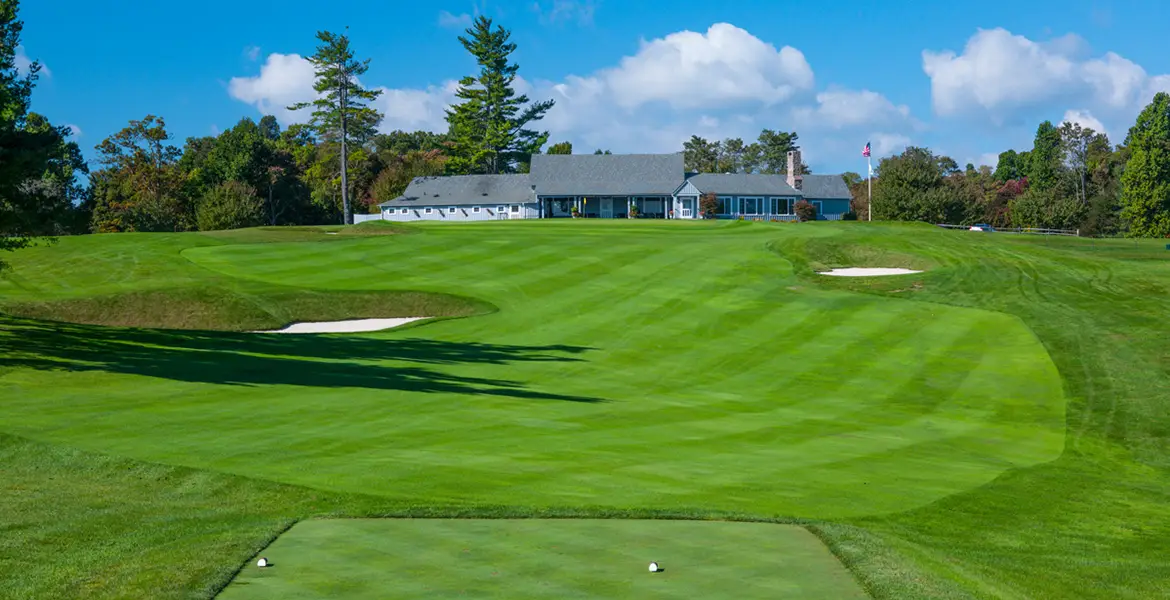I’m afraid I have no interest in Par-54 courses… but I love the holes that comprise them
Our Spring 2018 issue’s cover story focuses on the spate of high-profile Par-3 courses that have sprouted during the last couple of years. It got me to thinking about the love-hate relationship I’ve always had with the par three.
Alright, “love-hate” may be a bit strong. It’s just this: I have zero desire to play a course comprised of 18 par threes, but when it comes to a traditional golf course, I say the more threes, the better. I’m sure that sounds perverse, so let me explain.
I lump Par-3 courses together with Executive Courses, 9-Hole Courses, Mini Golf, and Frisbee Golf as sincere but sad simulations of the real thing. There’s a place for them—I just don’t want to go to that place. Call me a snob, a curmudgeon, whatever you like, but I have a limited number of rounds left in me and I want all of them to unfold on regulation courses: 18 holes, 6,000-plus yards, par 70–72, no windmills or clown’s mouths.
That said, my favorite species of hole is the little guy, the par three. Sadly, most courses have a maximum of four of them, often fewer. Indeed, the one quibble I have with my all-time favorite course, the Old Course at St. Andrews, is that it has only two par threes. Just imagine if Old Tom Morris had had a more highly developed sense of symmetry, if he’d had the bold vision to impose on that hallowed ground a course comprised of six par threes, six par fours, and six par fives—a template that would have been copied the world over. Oh how much more enthralling our current game would be!
Consider for a moment the unassailable virtues of the par three.

1 – Democracy: Whereas on a par four or five our shots to the green may come variously through tree branches or out of a divot, or across a beckoning pond, on a par three each of us stands upon the same level, well-clipped patch of turf, enjoys the same clear view of the target, and plays from the same perfect lie. The par three is golf’s equal opportunity employer.
2 – Disempowerment: Brute strength is all but meaningless on a par three. Measured strength is what’s important, along with shot planning, delicacy, and nerve. Sure Bubba Watson may be standing there with a wedge while you have a 5-iron, but imagine going toe-to-toe with him on a 600-yard uphill par five. After two well struck shots, he’ll be lining up an eagle putt while you waggle your 3-wood, hoping for a hot bounce off a sprinkler head.
3 – Rigor: Par fours and fives allow you to get sloppy. You can follow a loose tee shot with a miraculous recovery that leaves you a birdie putt. Not so on a three, where you literally have just one shot. It’s all on the line, no safety net, no escape hatch—stern but fair. As such, it’s the ultimate test.
4 – Instantaneousness: As an impatient Type A personality, I love the quickness of a par three. It’s not about pace of play, however, it’s the instant feedback. Once your ball is in the air, you have a pretty good idea of your fate, and once it lands you know what you need to do to make par. Contrast that with a par five where, in the words of Bobby Jones, “you don’t start playing golf until the third shot.”
5 – Charm: It’s no wonder the lists of the world’s best, most beautiful, and most compelling golf holes are populated disproportionately by par threes: the 7th at Pebble Beach, 16th at Cypress Point, 6th at New South Wales, 7th at Casa de Campo, 17th at TPC Sawgrass. Even the names are evocative: Babe in the Woods, Postage Stamp, Calamity Corner, Wee Precipice, Devil’s Cauldron, Pinched Nerve. Ironically, one-shotters are rarely set on the best golf terrain: Architects typically use them to bridge from one part of a site to another, often dropping precipitously or jumping across jagged, untraversable areas. But the result is invariably a dramatic and beautiful leap and the most memorable shotmaking assignment of the day.
6 – Variety: Par threes are to golf what dogs are to the animal kingdom—the species with the most astonishing diversity of shapes, sizes, and personalities. They range from 100-yard Chihuahuas or 300-yard St. Bernards, each with a different bark and bite. Granted, some threes, generally the longer ones, allow for a running approach, but for the most part par-three golf is target golf. And because that target is on full display for all to behold and discuss, architects tend to show off a bit with dramatic bunkering, wind-blown perches, steep shoulders and runoffs, and water in bold abundance. There are no statistics on such things, but my guess is that ponds, lakes, streams, rivers, and oceans menace par threes far more often than they do fours or fives. Likewise the greens: What could be more fun to attack and putt than a leftward-leaning Redan, except maybe a three-tiered Biarritz, both of which C.B. Macdonald created expressly for par threes. And it’s not surprising that the only green famed for the bunker in the center of it is the 6th at Riviera, a hole of 199 yards.
Bottom line, I applaud the current trend toward courses with par of 54. They use less land and require less maintenance than standard courses, thus require less time and money to play. But there’s one thing I’d rather see than more Par-3 courses and that’s courses with more par threes.






